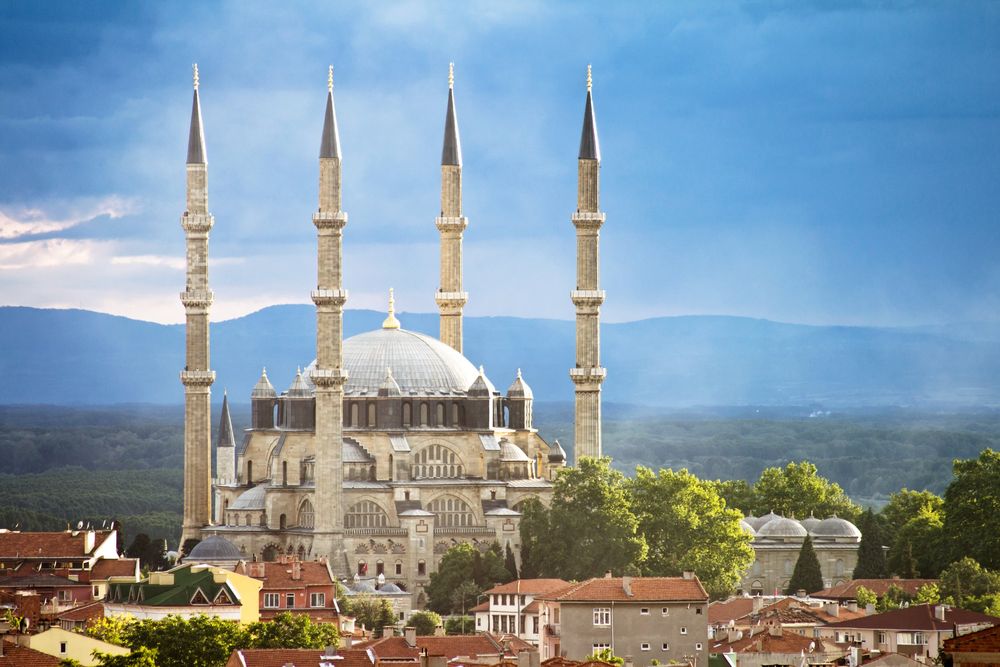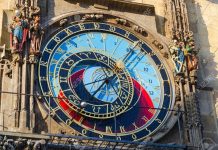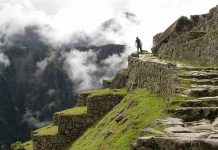This ancient church is the chief mosque in the northern state of Cyprus, and the great festivals of Bayram and other Moslem gatherings are conducted here. It was formerly the cathedral of St. Sophia which was built in the period 1209 A.D. to 1228, over the ruins of a previous building. Only recently, in 1976, have the ruins of the ancient building before 1200 A.D. been discovered, on the southern side. In style of architecture, St. Sophia resembles the famous mediaeval cathedrals of France.
The church was severely damaged by earthquakes in 1491, 1547 and 1735 A.D. and yet, as we see it today, the cathedral has survived. What is the reason for this? One would expect such high buildings to be razed to the ground during those severe earthquakes that occurred some centuries ago, for in those days, reinforced concrete and steel girders were unknown. The builders of ancient Gothic cathedrals always strived to make them as high as possible, to reach “up to heaven” and so inspire both awe and solemnity. The problem was how to do this, and, at the same time ensure that the walls would not collapse. This was done by building stone pillars outside to support the walls which are known as buttresses. If you live in a “posh” villa in Cyprus, your walls should be supported at the corners by buttresses. If there are none, then get out of the house quickly in the next earthquake.
Notice how massive they are, and widened at the base to give added strength. Later it was found that for such high walls, these buttresses were weak and the first Gothic churches of the 11th century often cracked and collapsed. The next improvement to be made was that of the flying buttress.
There is a much frequented pedestrian walk underneath the archway here, as it leads to the bus station nearby. For many years, a well known character had his smoking kebab stall here, but not only did he sell t he roasted meat, but he himself seemed to eat it all day long. He grew bigger and bigger until he, too, needed a buttress, but alas he has now departed.
Another improvement was to make the flying buttress spring from the conventional pillar type, by raising the latter to a much greater height. This would then give support to the topmost part of the walls and, most important of all, to the roof.
The roof always remained the weakest structure in all cathedrals, and likewise, it is so in your own house. This is the mass that comes down on you during an earth tremor; just too bad if the ‘quake occurs during the night! The makers of stained glass windows were expert craftsmen and they wanted big window spaces for displays of biblical scenes and, at the same time, a “dim religious light” was maintained to inspire awe and reverence. Churches were purposely kept dark and gloomy, for natural fears of the dark are part and parcel of the psychic establishment of reverence.
ln the eastern part of the church, i.e. the choir and altar section, it was always difficult to provide support, because the walls were weakened by so many windows.
When you visit the Selimiye mosque, be sure to contact the English speaking guide, Mr. Mehmet Koray, who will be pleased to conduct your round; remember, shoes off, as it is a holy place. You will be shown many mediaeval tombstones that help to date the church. Noteworthy, is that of Arnati Viconti, I347, and that of a Florentine merchant of l380. The interior of the mosque has been brightened up with white, red and yellow candelabra. When the cathedral was converted into a mosque in 1570, a re-arrangement was made to oriental it towards Mecca and not Jerusalem. The granite columns of the interior are Roman, probably from Salamis, and this indicates that there must have been some sort of Byzantine building here before 1200 A.D.
On the south side of the mosque is a Greek church built in the Byzantine and mediaeval styles. It is called The Bedestan, meaning covered market, and this it was, until the municipal market moved to buildings on the other side of the road. The Bedestan i s now preserved as an ancient monument and the interior has many fallen marble and granite columns, probably Roman, and it shows that the Bedestan was once a much larger church. Looking around the church, one can still see the effects of the severe earthquakes of centuries ago. The guide will show you a vaulted room full of mediaeval tombstones, many having the coats of arms of crusader knights. The best photograph to take is that of the beautifully carved Gothic door on the northern side. It is a good ex ample of French mediaeval stone carving. Quite a mystery is why two such large churches were built so close together.
The two tall minarets of the Selimiye mosque form a very prominent landmark in Nicosia. Coming down from the mountains on the Kyrenia road, and just before reaching Gönyeli, one can pinpoint Nicosia by these twin towers. The next time you fly over Nicosia, you will hardly notice the mosque, but most conspicuous of all are the Venetian encircling walls with their eleven polygonal bastions.



























